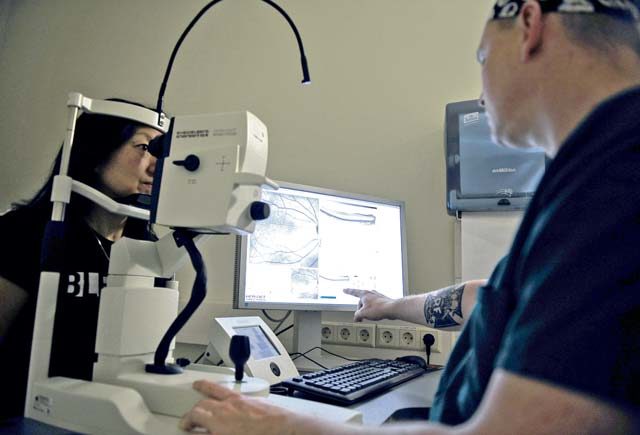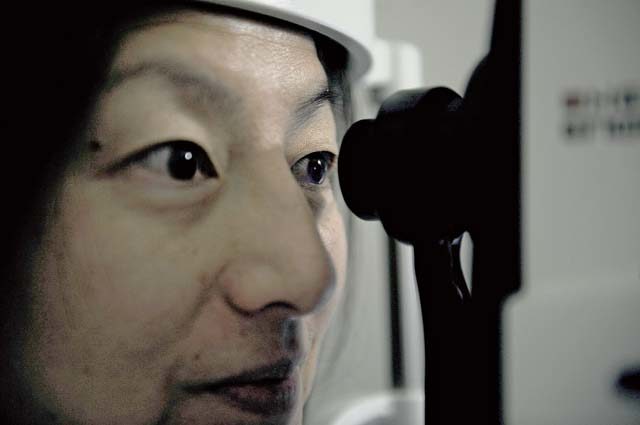
U.S. Air Force medical squadrons around the world do their best to ensure that service members’ medical needs are taken care of, and it’s certainly no different for Landstuhl Regional Medical Center’s Ophthalmology Clinic.
The ophthalmology clinic at LRMC is operated by both Airmen and Soldiers, and separated into two parts: ophthalmology and the refractive surgery clinic.
The clinic offers ophthalmology eye disease management and eye surgeries to military members, dependents, retirees and qualified Department of Defense civilians. Refractive surgery is available to active duty members through the Warfighter Refractive Eye Surgery Program, which helps to reduce or eliminate the need for distance glasses.
“We offer both photorefractive keratectomies (PRK) and laser eye surgery (LASIK), and perform over 600 procedures a year,” said Maj. Ryan Molchan, 86th Medical Squadron Warfighter Refractive Eye Surgery Program chief. “By making our active duty members less dependent on spectacles, we can enhance their war fighting capabilities.”
The program started in 2000, and only active-duty service members qualify for this procedure. As each service component has unique requirements, members should visit their local optometrist to learn about the process.
“By de–creas–ing spec-tacle and contact lens dependence in our fight-ing force, our laser center enhances operational readi-ness for the com-mands that we serve and increases mission safety for our patients,” said Staff Sgt. Pricious Dongon, 86th MDS WRESP NCO in charge.
Having both Army and Air Force physicians gives the clinic ready access to colleagues who understand the ocular conditions and impact on the respective service requirements, said Tech. Sgt. Michael Mayes, 86th MDS ophthalmology clinic NCO in charge.
This teamwork helps them to amalgamate into a better performing unit with the different experience they bring to the table through training.
Special categories, like flight status, have different restrictions and forms. This helps with patient’s readiness, and gives physicians the resources they need to care for a service member of a sister service.
“I’ve spent about half my career in a joint environment,” said Maj. Michael Madsen, 86th MDS ophthalmologist. “While there are some differences in how things are administered, medicine is medicine and patients are patients, so there really isn’t too much of a difference in how we approach things clinically.”
Every day, these service members work together with their sister services to provide the full-scope of comprehensive eye care to active duty members, retirees, and dependents in U.S. Air Forces in Europe, and find the instant and life-changing results of their work extremely
satisfying.
“Hands down the best part of my job is helping people see better,” Molchan said. “Often in medicine we manage chronic diseases, but in Ophthalmology, we can improve someone’s vision for the rest of their lives.”



